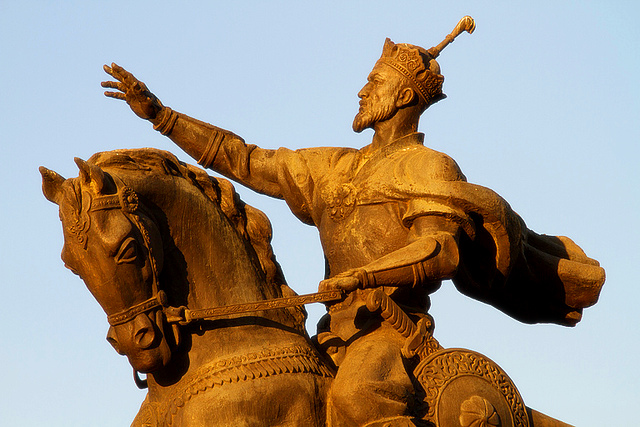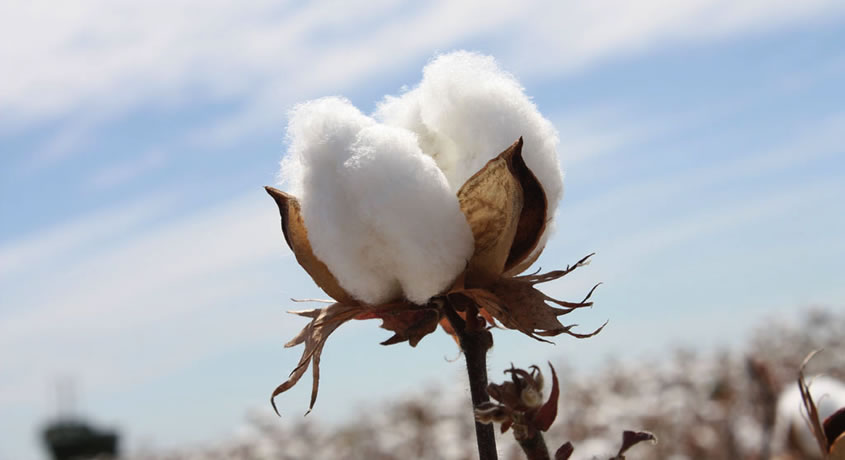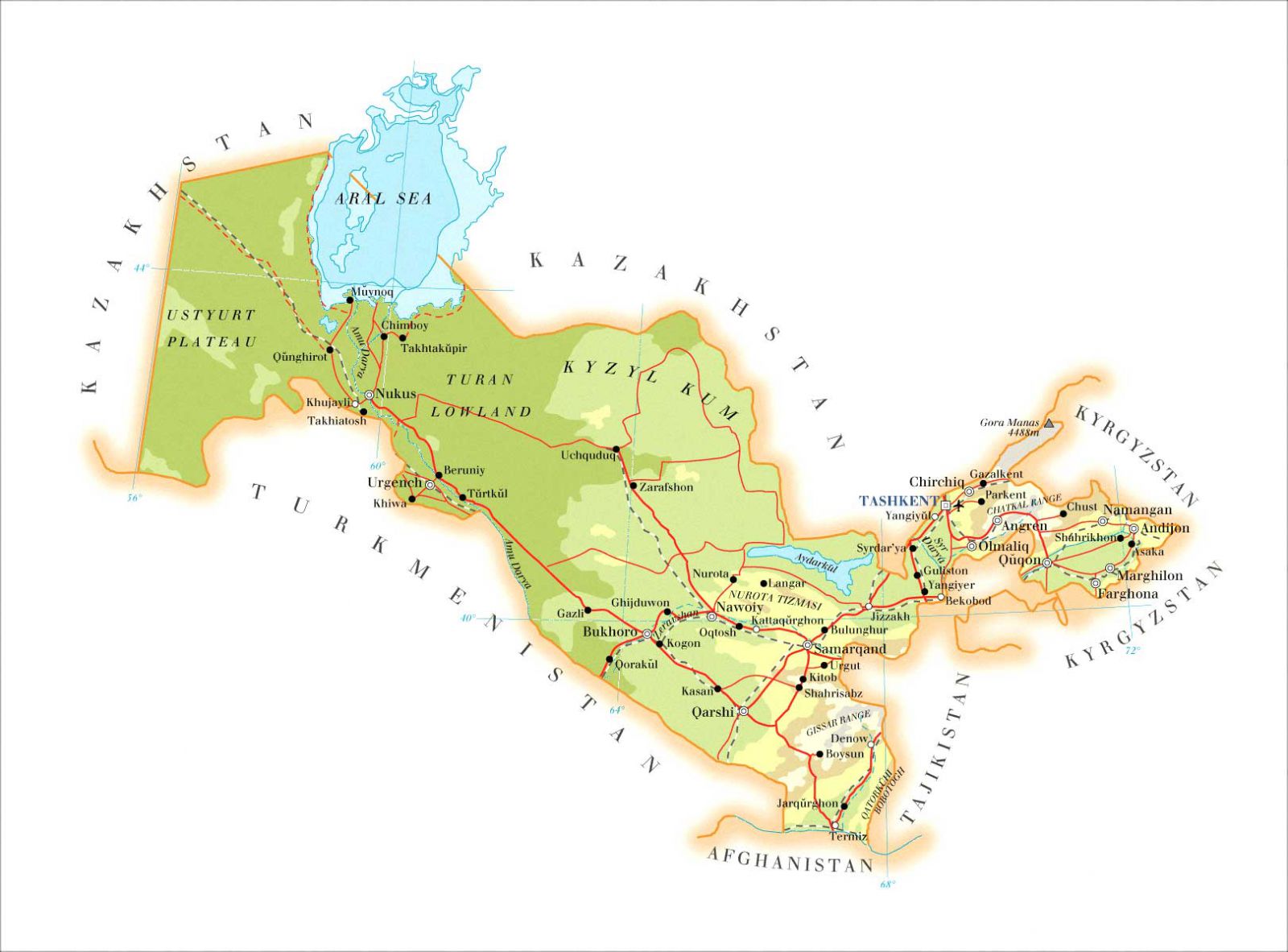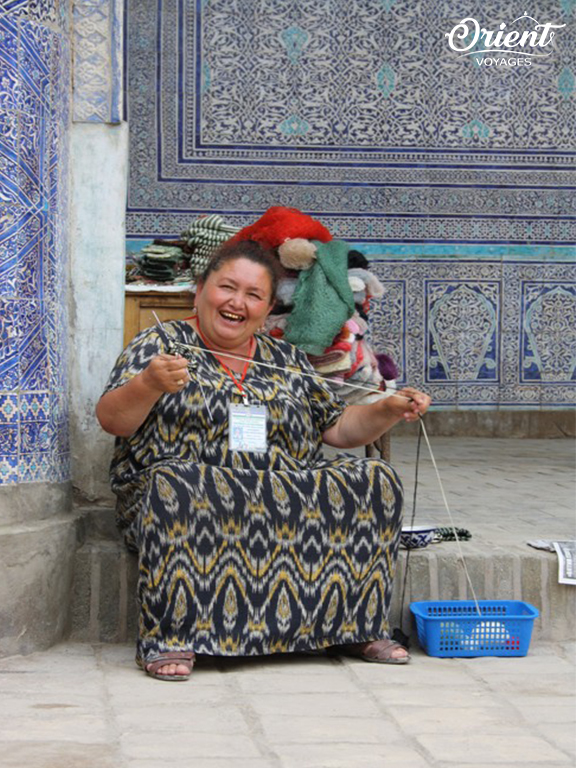-
Khiva, main gates Ota Darvaza
-
Khiva
-
Bukhara, Nodir Divan-Begi madrassah
-
Bukhara, Ark Fortress
-
Tashkent, Khast Imam Square
-
Bukhara
-
Samarkand, ensemble Shakhi Zinda
-
Bukhara, view on to Miri-Arab madrassah, XVI c.
-
Kyzylkum desert, riding on camels
-
Konigil village, silk paper center, noria
-
Sherdor madrassah, Samarkand
-
Samarkand, Registan Square
Main / Uzbekistan /
Ancient Blessed Land Of Uzbekistan
On our planet, there are many countries of interest to travel. One of such countries is Uzbekistan.
Our country is located in the heart of Central Asia, between the rivers Amu Darya and Syr Darya, and is bordered by four other Central Asian republics: Kazakhstan - in the north, Turkmenistan - in the south-west, Kyrgyzstan - in the east, Tajikistan - in the south-east. In the south, there is a small section of the border (600 km) with Afghanistan.
Uzbekistan gained its current borders in 1924, after the national-territorial demarcation, when the whole of Central Asia became a part of the USSR. August 31, 1991, after the collapse of the Soviet Union, Uzbekistan became an independent state.
Compared with European countries, Uzbekistan is very big country - 447 thousand square km. Italy, for instance, occupies 301 thousand square km. Of European countries only France (551), Spain (505) and Sweden (450) are bigger than Uzbekistan in area.
 The capital of Uzbekistan - Tashkent is located in an oasis of the Chirchik River on foothills of the Tien Shan. City Chach (Shash), current Tashkent, was known as one of the most ancient cities of the Great Silk Road. Today it is a modern fast-growing, changing city. It is the only one in Central Asia having the subway. The city has many historical sites, museums, theaters, universities, palaces and parks. Tashkent is famous for its bazaars. The largest and most spectacular is the Eski Juva Bazaar, located in the old town district of the capital.
The capital of Uzbekistan - Tashkent is located in an oasis of the Chirchik River on foothills of the Tien Shan. City Chach (Shash), current Tashkent, was known as one of the most ancient cities of the Great Silk Road. Today it is a modern fast-growing, changing city. It is the only one in Central Asia having the subway. The city has many historical sites, museums, theaters, universities, palaces and parks. Tashkent is famous for its bazaars. The largest and most spectacular is the Eski Juva Bazaar, located in the old town district of the capital.
Uzbekistan, like thousands of years ago, continues to occupy a favorable geographical location at the crossroads of routes linking Europe to the East and South-East Asia. There is the largest in Central Asia international airport in Tashkent. Rail and road routes link Uzbekistan with neighboring countries. We can say that this is a new level of revival of the Great Silk Road.
Uzbekistan is one of the few countries on the Eurasian continent, with most days of sunshine per year, about 300 days. The climate of Uzbekistan is sharply continental. Average temperature in January is from +4 ° C up to to - 8 ° C, in July - from +22 ° C to +42 ° C. Speaking of soil fertility, we should note the valleys of Zarafshan, the Amu Darya and Syr Darya and the granary of the country - the Ferghana Valley. Another thing is that not all the land is suitable for life. Huge area in the center of the country is desert Kizilkum, north-west of the Aral Sea - anhydrous Ustyurt Plateau, distinguished by its harsh climate; in the south-east and east - the spurs of the Pamir and Tien Shan.
Life, like thousands of years ago, is concentrated in the valleys of the Amu Darya, Syr Darya and their tributaries, where in the VIII-VII centuries BC came the first state formations: Bactria, Sogdiana, and Khorezm.
 From times immemorial oases of Uzbekistan are buried in gardens and fields, there is an abundance of growing peaches, apricots, cherries, and many other fruits. Various sorts of vegetables and cereals grow on the artificially irrigated fields. Uzbekistan is also called the country of "white gold" - cotton.
From times immemorial oases of Uzbekistan are buried in gardens and fields, there is an abundance of growing peaches, apricots, cherries, and many other fruits. Various sorts of vegetables and cereals grow on the artificially irrigated fields. Uzbekistan is also called the country of "white gold" - cotton.
Well, in the desert and mountain areas there are explored and developed huge deposits of oil, gas, mineral resources, including gold.
Uzbekistan is the only country in Central Asia, with living ancient cities of Bukhara, Samarkand, Khiva, Karshi, Shakhrisabz, Termez, Margilan, Tashkent ... Through all these cities went the routes of the Great Silk Road, contributing to their centuries of prosperity. Only due to its favorable geographical position, they do not sink into oblivion as far their contemporaries Babylon, Thebes, and Persepolis...
Time and numerous wars, religious intolerance and earthquakes did not spare magnificent palaces, churches and city buildings with ceramic water pipes, unique irrigation works, traces of which are found everywhere by archaeologists. Especially a lot of them were destroyed during the Arab (VII-VIII centuries) and Mongolian (XIII century.) invasions.
Nevertheless, in Uzbekistan there are more than 1400 historical and architectural monuments, many of them are unique and are listed in the World Heritage List of UNESCO.
.jpg) Of course, the most attractive city for any traveller is Samarkand (in ancient times - Maracanda or Marokand). The city possesses the eighth wonder of the world, historical pride of Samarkand - Registan Square, Temurid dynasty mausoleum - Gur-Emir, Bibi Khanum, and of course, a complex of mausoleums of Shah-i-Zinda, located on the slope of Afrasiab. The beginning of its construction dates back to the XII century, but primarily it was formed in the XIV-XV centuries by Amir Temur. Samarkand has the title "Pearl of the East".
Of course, the most attractive city for any traveller is Samarkand (in ancient times - Maracanda or Marokand). The city possesses the eighth wonder of the world, historical pride of Samarkand - Registan Square, Temurid dynasty mausoleum - Gur-Emir, Bibi Khanum, and of course, a complex of mausoleums of Shah-i-Zinda, located on the slope of Afrasiab. The beginning of its construction dates back to the XII century, but primarily it was formed in the XIV-XV centuries by Amir Temur. Samarkand has the title "Pearl of the East".
.jpg) A city museum under the open sky - Bukhara includes Citadel Ark (its construction belongs to the III century BC), Complex Poyikalon with majestic mosque Kalyan (XVI c.), 47-meter minaret Kalyan and Mir-Arab madrassah (now an Islamic seminary), Mausoleum of Ismail Samani (the end of the IX century) and trading domes of the XV-XVI centuries, Tak-i-Sarrafon (dome of shroffs), Tak-i-Telpak-Furushon (dome of hat sellers) and Tak- i Zargaron (dome of jewelers), which operate today.
A city museum under the open sky - Bukhara includes Citadel Ark (its construction belongs to the III century BC), Complex Poyikalon with majestic mosque Kalyan (XVI c.), 47-meter minaret Kalyan and Mir-Arab madrassah (now an Islamic seminary), Mausoleum of Ismail Samani (the end of the IX century) and trading domes of the XV-XVI centuries, Tak-i-Sarrafon (dome of shroffs), Tak-i-Telpak-Furushon (dome of hat sellers) and Tak- i Zargaron (dome of jewelers), which operate today.
 Khiva holds the title of "town - fairy-tale," a magical mirage of the town is represented by the architectural complex of Ichan-Kala, which is surrounded by thick walls with four gates. At the western gate is the oldest part of town with the remains of the castle Akshik Bobo; next - intended as the largest in the world, but, alas unfinished minaret Kalta Minor (short); a majestic madrassah of Muhammad Amin Khan, Khan's palace Tash Hauley, the amazing beauty of the Juma Mosque, and of course the highest building in Khiva Islam Khodja minaret (56 meters).
Khiva holds the title of "town - fairy-tale," a magical mirage of the town is represented by the architectural complex of Ichan-Kala, which is surrounded by thick walls with four gates. At the western gate is the oldest part of town with the remains of the castle Akshik Bobo; next - intended as the largest in the world, but, alas unfinished minaret Kalta Minor (short); a majestic madrassah of Muhammad Amin Khan, Khan's palace Tash Hauley, the amazing beauty of the Juma Mosque, and of course the highest building in Khiva Islam Khodja minaret (56 meters).
Our country is located in the heart of Central Asia, between the rivers Amu Darya and Syr Darya, and is bordered by four other Central Asian republics: Kazakhstan - in the north, Turkmenistan - in the south-west, Kyrgyzstan - in the east, Tajikistan - in the south-east. In the south, there is a small section of the border (600 km) with Afghanistan.
Uzbekistan gained its current borders in 1924, after the national-territorial demarcation, when the whole of Central Asia became a part of the USSR. August 31, 1991, after the collapse of the Soviet Union, Uzbekistan became an independent state.
Compared with European countries, Uzbekistan is very big country - 447 thousand square km. Italy, for instance, occupies 301 thousand square km. Of European countries only France (551), Spain (505) and Sweden (450) are bigger than Uzbekistan in area.
 The capital of Uzbekistan - Tashkent is located in an oasis of the Chirchik River on foothills of the Tien Shan. City Chach (Shash), current Tashkent, was known as one of the most ancient cities of the Great Silk Road. Today it is a modern fast-growing, changing city. It is the only one in Central Asia having the subway. The city has many historical sites, museums, theaters, universities, palaces and parks. Tashkent is famous for its bazaars. The largest and most spectacular is the Eski Juva Bazaar, located in the old town district of the capital.
The capital of Uzbekistan - Tashkent is located in an oasis of the Chirchik River on foothills of the Tien Shan. City Chach (Shash), current Tashkent, was known as one of the most ancient cities of the Great Silk Road. Today it is a modern fast-growing, changing city. It is the only one in Central Asia having the subway. The city has many historical sites, museums, theaters, universities, palaces and parks. Tashkent is famous for its bazaars. The largest and most spectacular is the Eski Juva Bazaar, located in the old town district of the capital.Uzbekistan, like thousands of years ago, continues to occupy a favorable geographical location at the crossroads of routes linking Europe to the East and South-East Asia. There is the largest in Central Asia international airport in Tashkent. Rail and road routes link Uzbekistan with neighboring countries. We can say that this is a new level of revival of the Great Silk Road.
Uzbekistan is one of the few countries on the Eurasian continent, with most days of sunshine per year, about 300 days. The climate of Uzbekistan is sharply continental. Average temperature in January is from +4 ° C up to to - 8 ° C, in July - from +22 ° C to +42 ° C. Speaking of soil fertility, we should note the valleys of Zarafshan, the Amu Darya and Syr Darya and the granary of the country - the Ferghana Valley. Another thing is that not all the land is suitable for life. Huge area in the center of the country is desert Kizilkum, north-west of the Aral Sea - anhydrous Ustyurt Plateau, distinguished by its harsh climate; in the south-east and east - the spurs of the Pamir and Tien Shan.
Life, like thousands of years ago, is concentrated in the valleys of the Amu Darya, Syr Darya and their tributaries, where in the VIII-VII centuries BC came the first state formations: Bactria, Sogdiana, and Khorezm.
 From times immemorial oases of Uzbekistan are buried in gardens and fields, there is an abundance of growing peaches, apricots, cherries, and many other fruits. Various sorts of vegetables and cereals grow on the artificially irrigated fields. Uzbekistan is also called the country of "white gold" - cotton.
From times immemorial oases of Uzbekistan are buried in gardens and fields, there is an abundance of growing peaches, apricots, cherries, and many other fruits. Various sorts of vegetables and cereals grow on the artificially irrigated fields. Uzbekistan is also called the country of "white gold" - cotton.Well, in the desert and mountain areas there are explored and developed huge deposits of oil, gas, mineral resources, including gold.
Uzbekistan is the only country in Central Asia, with living ancient cities of Bukhara, Samarkand, Khiva, Karshi, Shakhrisabz, Termez, Margilan, Tashkent ... Through all these cities went the routes of the Great Silk Road, contributing to their centuries of prosperity. Only due to its favorable geographical position, they do not sink into oblivion as far their contemporaries Babylon, Thebes, and Persepolis...
Time and numerous wars, religious intolerance and earthquakes did not spare magnificent palaces, churches and city buildings with ceramic water pipes, unique irrigation works, traces of which are found everywhere by archaeologists. Especially a lot of them were destroyed during the Arab (VII-VIII centuries) and Mongolian (XIII century.) invasions.
Nevertheless, in Uzbekistan there are more than 1400 historical and architectural monuments, many of them are unique and are listed in the World Heritage List of UNESCO.
.jpg) Of course, the most attractive city for any traveller is Samarkand (in ancient times - Maracanda or Marokand). The city possesses the eighth wonder of the world, historical pride of Samarkand - Registan Square, Temurid dynasty mausoleum - Gur-Emir, Bibi Khanum, and of course, a complex of mausoleums of Shah-i-Zinda, located on the slope of Afrasiab. The beginning of its construction dates back to the XII century, but primarily it was formed in the XIV-XV centuries by Amir Temur. Samarkand has the title "Pearl of the East".
Of course, the most attractive city for any traveller is Samarkand (in ancient times - Maracanda or Marokand). The city possesses the eighth wonder of the world, historical pride of Samarkand - Registan Square, Temurid dynasty mausoleum - Gur-Emir, Bibi Khanum, and of course, a complex of mausoleums of Shah-i-Zinda, located on the slope of Afrasiab. The beginning of its construction dates back to the XII century, but primarily it was formed in the XIV-XV centuries by Amir Temur. Samarkand has the title "Pearl of the East"..jpg) A city museum under the open sky - Bukhara includes Citadel Ark (its construction belongs to the III century BC), Complex Poyikalon with majestic mosque Kalyan (XVI c.), 47-meter minaret Kalyan and Mir-Arab madrassah (now an Islamic seminary), Mausoleum of Ismail Samani (the end of the IX century) and trading domes of the XV-XVI centuries, Tak-i-Sarrafon (dome of shroffs), Tak-i-Telpak-Furushon (dome of hat sellers) and Tak- i Zargaron (dome of jewelers), which operate today.
A city museum under the open sky - Bukhara includes Citadel Ark (its construction belongs to the III century BC), Complex Poyikalon with majestic mosque Kalyan (XVI c.), 47-meter minaret Kalyan and Mir-Arab madrassah (now an Islamic seminary), Mausoleum of Ismail Samani (the end of the IX century) and trading domes of the XV-XVI centuries, Tak-i-Sarrafon (dome of shroffs), Tak-i-Telpak-Furushon (dome of hat sellers) and Tak- i Zargaron (dome of jewelers), which operate today. Khiva holds the title of "town - fairy-tale," a magical mirage of the town is represented by the architectural complex of Ichan-Kala, which is surrounded by thick walls with four gates. At the western gate is the oldest part of town with the remains of the castle Akshik Bobo; next - intended as the largest in the world, but, alas unfinished minaret Kalta Minor (short); a majestic madrassah of Muhammad Amin Khan, Khan's palace Tash Hauley, the amazing beauty of the Juma Mosque, and of course the highest building in Khiva Islam Khodja minaret (56 meters).
Khiva holds the title of "town - fairy-tale," a magical mirage of the town is represented by the architectural complex of Ichan-Kala, which is surrounded by thick walls with four gates. At the western gate is the oldest part of town with the remains of the castle Akshik Bobo; next - intended as the largest in the world, but, alas unfinished minaret Kalta Minor (short); a majestic madrassah of Muhammad Amin Khan, Khan's palace Tash Hauley, the amazing beauty of the Juma Mosque, and of course the highest building in Khiva Islam Khodja minaret (56 meters).REFERENCE
State system of Uzbekistan
State system of Uzbekistan is a presidential republic, which includes the Karakalpak Autonomous Republic and 12 provinces. Legislative - bicameral Parliament (Majlis). Currency - sum.
Administrative division of Uzbekistan
12 areas: Andijan, Bukhara, Jizzakh, Kashkadarya, Navoi, Namangan, Samarkand, Surkhandarya, Syrdarya, Tashkent, Fergana, Khorezm and Karakalpakstan.
Economy of Uzbekistan
Uzbekistan is the agro-industrial state. The agricultural sector is diversified. In planting is developed cotton, large areas are occupied by crops of kenaf, oily cultures, as well as cereals (rice, wheat, maize). Fruit and vegetables, melon, grapes cultivation is well developed. The main livestock industry is dairy and meat cattle breeding and Karakul (astrakhan) sheep.
Major industries: oil production and refining, chemical and mechanical engineering.
Population: Over 29 million people. (2011)
Religion
According to official figures, Muslims - 88% (mostly Sunnis), Eastern Orthodox - 9%. In total there were registered 16 religious confessiions.
Language
The state language of the Republic of Uzbekistan is Uzbek.
Public holidays
January 1 - New Year
March 8 - International Women's Day
March 21 - Navruz
May 9- Memorial Day
September 1 - Independence Day
October 1 - Teacher's Day
December 8 - Constitution Day
The first days of religious holidays Ruza Fitr and Eid al Adha
Visa
For CIS citizens visa-free entry to Uzbekistan. Foreign citizens and stateless persons may enter and transit through its territory only if there is an entry visa.
Customs
We recommend visitors to familiarize with customs regulations. http://www.customs.uz/rus/informaiya_dlya_svedeniya
Passport system
According to the Resolution of the Cabinet of Ministers of 16.04.1999 № 178, temporarily residing in Uzbekistan, foreign citizens must apply for registration on arrival at the place of stay for three days, excluding holidays and weekends. If staying in a hotel - the registration is done by the hotel itself.
Helpful information
Internet domain - uz
Telephone code - 998
Voltage - 220 V AC, 50 A, standard-pin plug socket
Time: GMT + 5:00

Review 

Buenos dias:
Os escribo solo para deciros que los clientes han venido a decirme que el viaje ha estado perfecto, sobre todo el guнa, que fue muy atento con ellos en ...
all reviews
all reviews














